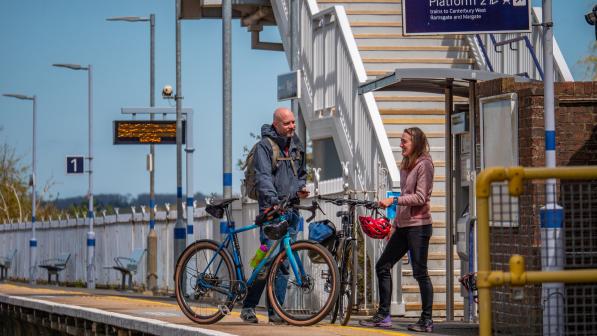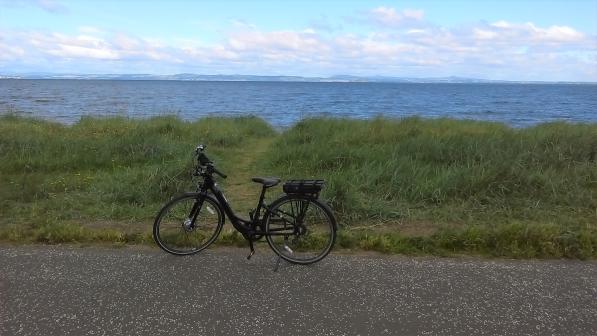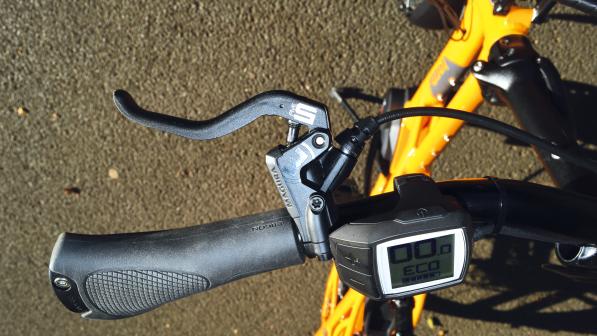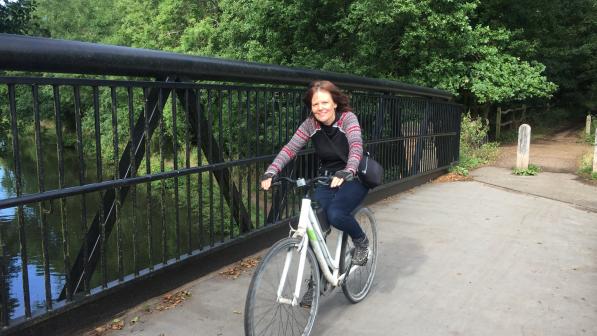Striking the balance on e-scooters

Over the past year, a new type of scooters has started appearing on Britain's streets – except that their users don't have to scoot. They have electric motors instead.
In most of Britain, it is still illegal to use them, either on the roads, or on pavements alongside a road. Legally, they can only be used on private land with the landowner's permission. In law, "mechanically propelled vehicles" (ie, vehicles with a mechanical source of power) can only be used on the roads if they are "intended or adapted for use on the roads", and are thus classed as "motor vehicles". Motor vehicles have to be approved and licensed, as do their drivers or riders, who also need compulsory third-party insurance. Like bicycles or other "carriages" (ie, any kind of vehicle), they cannot be ridden on pavements. It is also illegal to ride (or drive) mechanically propelled vehicles in other off-road settings such as parks, or on footpaths, bridleways or byways (though electrically assisted pedal cycles, or "e-bikes", are exempt from this rule).
However the government has been under pressure for some time to change this, not least given the popularity of these e-scooters. Many people are arguing that legalising them could be a very effective way to reduce car use, and hence the associated problems of congestion, road danger, air pollution and greenhouse gas emissions. This argument has gained considerable strength during the coronavirus crisis, as the government seeks ways to enable people to get around without depending on cars, at a time when public transport usage is inevitably limited.
Cycling UK would agree with all of this, and would add that e-scooters could also be valuable allies in pressing for more protected cycle lanes, and indeed for better-maintained road surfaces. With their smaller wheels, e-scooter users are even more vulnerable to potholes and other surface defects than cyclists are.
Yet there is also another side to the argument. If not regulated carefully, e-scooters could endanger pedestrians, particularly those who are partially sighted or have other disabilities. They could also undermine the health benefits of cycling and walking. Under the government's funding rule-book, the main economic justification for investment in cycle facilities is the health benefits of cycling. It would therefore be ironic if this justification were to be undermined, because e-scooters had taken over the space, even though their use doesn't require any physical activity.
Whether the upsides outweigh the downsides will depend on how e-scooters are regulated. They need to be fast enough to attract people out of their cars, but not so fast or powerful that they undermine the health benefits of cycling, or endanger pedestrians (and particularly people with disabilities) if allowed off the road.
Even before the coronavirus lockdown began, the Department for Transport (DfT) had launched a wider inquiry on the regulation of future transport, including "micromobility" vehicles (a term that also encompasses other kinds of small vehicles with low-powered motors that are currently not road-legal, but which could be very useful in the fight against congestion, pollution and climate change). At the same time, the transport secretary, Grant Shapps, had announced plans for trials of e-scooters next year in four English regions, to gather evidence on whether e-scooters were safe, and whether they would attract people to switch primarily from car travel (which would be a good thing), or from public transport. Unfortunately, the evidence from other countries is inconclusive on both questions – see a positive and a more sceptical overview of the evidence.
During lockdown though, as interest in e-scooters grew, Shapps decided to fast-track the planned e-scooter trials, allowing them to happen this year in any English local authority area that wanted to host them. Meanwhile the Commons transport select committee launched an inquiry into the subject.
It would be much harder to ... set high limits then lower them if the problems turn out to be more serious than predicted, as this would effectively involve banning people from using e-scooters on which they had just spent good money
Roger Geffen, head of policy, Cycling UK
Cycling UK responded both to the Commons inquiry (see our submission) and to the original DfT consultation, arguing that e-scooters should be regulated in accordance with the "precautionary principle", ie, adopting a cautious approach to determining their maximum speed, maximum power output, maximum weight and indeed their maximum acceleration (something DfT hadn't thought about). For some time we have been pointing out that it would be relatively straightforward to set cautious limits, then decide to raise them in the future if e-scooters turn out to be reasonably unproblematic (i.e. if they are reasonably safe, and they mainly attract trips from cars rather than from walking, cycling and public transport). However it would be much harder to do the opposite (to set high limits then lower them if the problems turn out to be more serious than predicted), as this would effectively involve banning people from using e-scooters on which they had just spent good money.
Somewhat alarmingly, Shapps's "fast-tracked" trials were to be preceded only by a hasty two-week public consultation. More reassuringly, DfT proposed only to permit hired e-scooters with reasonably cautious speed, power and weight limits (ie, privately-owned e-scooters still cannot be legally used on the roads, even in the trial areas). The maximum speed would be 20kph (12.5mph – this is lower than the 25kph / 15.5mph limit at which e-bike motors cut out), the maximum power output would be 350W (e-bikes have a maximum power of 250W – it is unclear why e-scooters were being allowed a higher limit), and the weight limit would be 35kg.
Then, at the conclusion of the consultation, DfT announced that these trials would proceed but with all of these limits raised. Instead of the originally proposed limits, DfT opted for 25kmh (or 15.5mph), 500W and 50kg. This is far more likely to result in them causing danger and intimidation to pedestrians, as well as undermining the health benefits of cycling. It has passed regulations to permit these trials, which have already commenced in Teesside.
The Lords Committee that scrutinises secondary legislation has voiced concern about this, saying it unclear whether these are in fact trials, or (in effect) a response to the transport problems of the coronavirus pandemic. After all, ministers have admitted that they have yet to put in place a monitoring framework to decide how the success or otherwise of these trials will be decided (see answer to Q130).
We will have to see what happens. However my own fear is that these hastily taken decisions have effectively released a genie that may be very hard to put back into the bottle. E-bikes have been successfully legalised subject to power, weight and other limits which allow them to be used safely in off-road settings, without the vehicles or their users needing to be licensed or insured, or to wear helmets. If visually impaired and other groups dig in against the threat of powerful and heavy e-scooters in parks, open spaces and other areas with pedestrian priority, we will end up having to emphasise the differences rather than the similarities between these vehicles and pedal cycles, including e-bikes. It will then be much harder to view them as potential allies in the fight against congestion, pollution and climate change.



